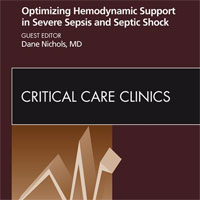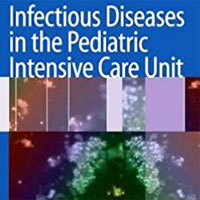Tag: sepsis
Updates and Controversies in the Early Management of Sepsis and Septic Shock
For patients in the ED who are suspected of having sepsis, swift, effective management is vital to improving outcomes. This issue reviews the latest evidence on the diagnosis and treatment of sepsis and septic shock: ... read more
Vasopressors in Sepsis in 2050
Vasopressors are used in sepsis when hypotension is assumed to be mainly due to a decreased arterial tone. However, the appropriate time to initiate vasopressors is not clearly defined, and fluid administration is most... read more
Unsupervised Analysis of Transcriptomics in Bacterial Sepsis Across Multiple Datasets Reveals Three Robust Clusters
The three sepsis subtypes may represent a unifying framework for understanding the molecular heterogeneity of the sepsis syndrome. Further study could potentially enable a precision medicine approach of matching novel immunomodulatory... read more
Sepsis and Septic Shock – What Matters from EM Cases Course
In this podcast Dr. Sara Gray, intensivist and emergency physician, co-author of The CAEP Sepsis Guidelines, answers questions such as: How does one best recognize occult septic shock? How does SIRS, qSOFA and NEWS compare... read more
Left ventricular systolic function evaluated by strain echocardiography and relationship with mortality in patients with severe sepsis or septic shock
Worse global longitudinal strain (GLS) (less negative) values are associated with higher mortality in patients with severe sepsis or septic shock, while such association is not valid for left ventricular ejection fraction... read more
Pooled Analysis of Higher vs Lower Blood Pressure Targets for Vasopressor Therapy Septic and Vasodilatory Shock
Targeting higher blood pressure targets may increase mortality in patients who have been treated with vasopressors for more than 6h. Lower blood pressure targets were not associated with patient‑important adverse events... read more
Extravascular Lung Water as a Target for Intensive Care
Extravascular lung water (EVLW) remains a useful guide for monitoring pulmonary edema (PO) and vascular permeability in sepsis, acute respiratory distress syndrome (ARDS), and heart failure. In addition, EVLW has a prognostic... read more
A Non-Antibiotic Approach for Treating or Preventing Sepsis
Researchers at the Royal College of Surgeons in Ireland (RCSI) have tested a compound called cilengitide in a preclinical trial. The drug goes by the brand name InnovoSep. Researchers discover the drug has the potential to... read more
Clinics Aim to Improve Post-ICU Recovery
Ten days after arriving in the emergency department with pneumonia, 58-year-old Connie Bovier woke up in the intensive care unit (ICU). She survived acute respiratory distress syndrome (ARDS), sepsis, and a host of other... read more
Sepsis Test Could Show Results In Minutes
A new rapid test for earlier diagnosis of sepsis is being developed by University of Strathclyde researchers. The device, which has been tested in a laboratory, may be capable of producing results in two-and-a-half minutes,... read more
Effect of a Resuscitation Strategy Targeting Peripheral Perfusion Status vs Serum Lactate Levels on 28-Day Mortality Among Patients With Septic Shock
Among patients with septic shock, a resuscitation strategy targeting normalization of capillary refill time, compared with a strategy targeting serum lactate levels, did not reduce all-cause 28-day mortality. Among 424 patients... read more
Should We Stop Trending Lactate in Septic Shock?
There may be a tendency to cement guideline recommendations into our collective minds as inalienable and sacrosanct – as if carved onto stone tablets and brought down to us from the heights of Mount Sinai. Thoughtful medicine,... read more
Antibiotic timing in Severe Sepsis
Severe sepsis is a time dependent condition and this study builds on previous literature which supports that early identification and treatment of sepsis with antibiotics decreases mortality. Retrospective analysis of a large... read more
Fever Control in Critically Ill Adults
One potential way to protect patients from the physiological demands that are a consequence of fever is to aim to prevent fever and to treat it assiduously when it occurs. Our findings do not support the hypothesis that more... read more
Optimizing Hemodynamic Support in Severe Sepsis and Septic Shock, An Issue of Critical Care Clinics
Guest Editor Dane Nichols, MD, has assembled a panel of experts focusing on Hemodynamic Support in Septic Shock. Topics include: Oxygen Delivery and Consumption: A Macro-Circulatory Perspective; Mean Arterial Pressure: Therapeutic... read more

Antifungal Treatment in the ICU
Invasive fungal infections (IFIs) are a major cause of morbidity and mortality in critically ill patients. Almost 80% of IFIs are due to Candida spp., which are the third most common isolated microorganisms in the intensive... read more
Patient-important outcomes in randomized controlled trials in critically ill patients
Patient-important outcomes are rarely primary outcomes in RCTs in critically ill patients published in 2013. Among them, mortality accounted for the majority. We promote the use of patient-important outcomes in critical care... read more
The Artificial Intelligence Clinician Learns Optimal Treatment Strategies for Sepsis in Intensive Care
Sepsis is the third leading cause of death worldwide and the main cause of mortality in hospitals but the best treatment strategy remains uncertain. In particular, evidence suggests that current practices in the administration... read more
Mimics of Sepsis: What do ED Physicians Need to Know?
SIRS and sepsis are common clinical entities. A wide range of estimates for prevalence exists, with 300 to 1000 cases per 100,000 persons per year. Once a septic patient is admitted, more than half will require at least step... read more
Infectious Diseases in the Pediatric ICU
Infants and children are at high risk of acquiring infections and this is most critical on the pediatric intensive care unit, as these infections have serious effects on mortality. Infectious Diseases in the Pediatric Intensive... read more

Metabolic Sepsis Resuscitation
There are roughly two strategies for adjusting the intensity of treatment: Titrated strategy: Treatment intensity is adjusted to match the severity of the disease. Escalation-deescalation strategy: Treatment intensity is... read more
Host Genetic Variants in Sepsis Risk
Published data revealed that host genetic variants have a substantial influence on sepsis susceptibility. However, the results have been inconsistent. We aimed to systematically review the published studies and quantitatively... read more









